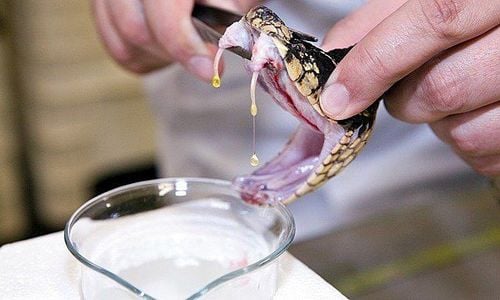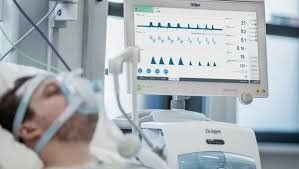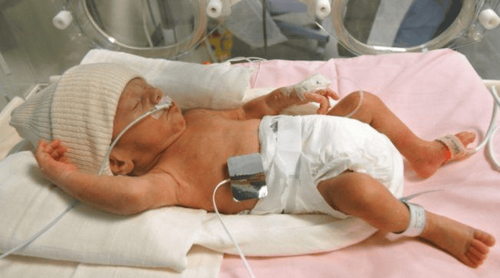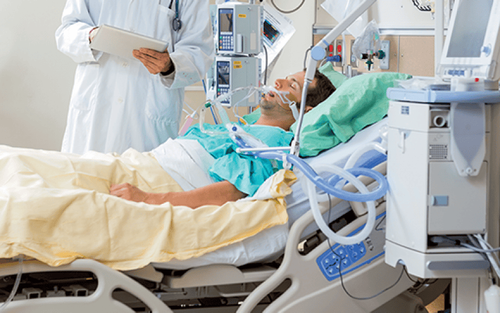This is an automatically translated article.
The article is professionally consulted by Master, Doctor Tong Van Hoan - Emergency Medicine Doctor - Emergency Department - Vinmec Danang International Hospital.Prolonged mechanical ventilation will increase the risk of nosocomial infections, lung damage, malnutrition, pressure ulcers, electrolyte disturbances, etc. on the other hand, the treatment costs are expensive, but there is still a risk of death for patients. patient. Therefore, with mechanically ventilated patients, it is necessary to quickly assess the process of weaning from the ventilator so that the ventilator can be removed as soon as possible. This process needs to be considered from the very beginning of the ventilatory patient.
1. Weaning off ventilators
Mechanical ventilation (artificial ventilation or artificial respiration) is used when the patient's spontaneous ventilation cannot be achieved on its own. This method is intended to provide artificial ventilation and oxygenation. Mechanical ventilation will be prescribed by the doctor in some cases such as: apnea, respiratory failure with hypoxemia, or hypercapnia, actively controlling the air (anesthesia), needing to stabilize the chest wall to prevent collapse. lung.Weaning off the ventilator is the process of gradually reducing the ventilator's support and gradually increasing the patient's natural breathing to achieve the goal when leaving the ventilator. This process can take days, weeks, or even months. Wean the patient from the ventilator when: the cause of the need for ventilation has been resolved, gas exchange is maintained with the lowest level of support (spontaneous breathing rate < 30 breaths/minute)
Weaning from the ventilator has a long range. of great importance to the patient. Ventilators need to be removed as soon as possible because if this process is prolonged, the patient will increase the risk of infection, ventilator-associated lung damage, airway injury, ... and a number of risk factors that make it difficult. for the subsequent weaning process.
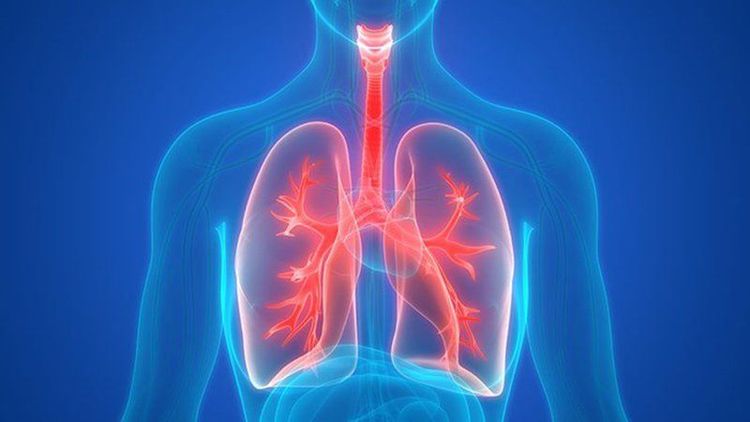
Dùng máy thở kéo dài có thể khiến phổi bị tổn thương
2. Condition for weaning from ventilator
To successfully wean off the ventilator when the patient meets most of the following criteria:Solve the cause of the need for mechanical ventilation. Stable blood pressure: do not use or use small doses of vasopressors, heart support. Heart rate <140 cycles/min Temperature < 38 degrees C pH and PaCO2 are consistent with the patient's underlying respiratory disease. Ventilation criteria: PaO2 ≤ 50mmHg and normal pH, VC > 10-15ml/kg, spontaneous breathing Vt > 5-8ml/kg, spontaneous breathing rate <30/min, minute ventilation <10L. Oxygen standard: PaO2 without PEEP > 60mmHg with FiO2 ≤ 0.4, PaO2 with PEEP >100 mmHg with FiO2 ≤ 0.4, SaO2 >90% with FiO2 ≤ 0.4, Qs/Qt <20%, P(A-a)O2 < 350 mmHg with Fio2 = 1, PaO2/FiO2 > 200. Lung reserve: MIP(NIP) > -20 to -30 cmH2O within 20 seconds Pulmonary mechanical parameters: Static compliance > 30ml/cmH2O, airway resistance ( The lower the probability, the higher the success rate, normal is 0.6-2.4cmH2O/L/sec if there is no endotracheal tube ), VD/VT < 60%. Combined indices: shallow tachypnea index (f/Vt) < 100 beats/min/L; simple withdrawal index (SWI) < 9/min; CROP index > 13ml/cycle/min
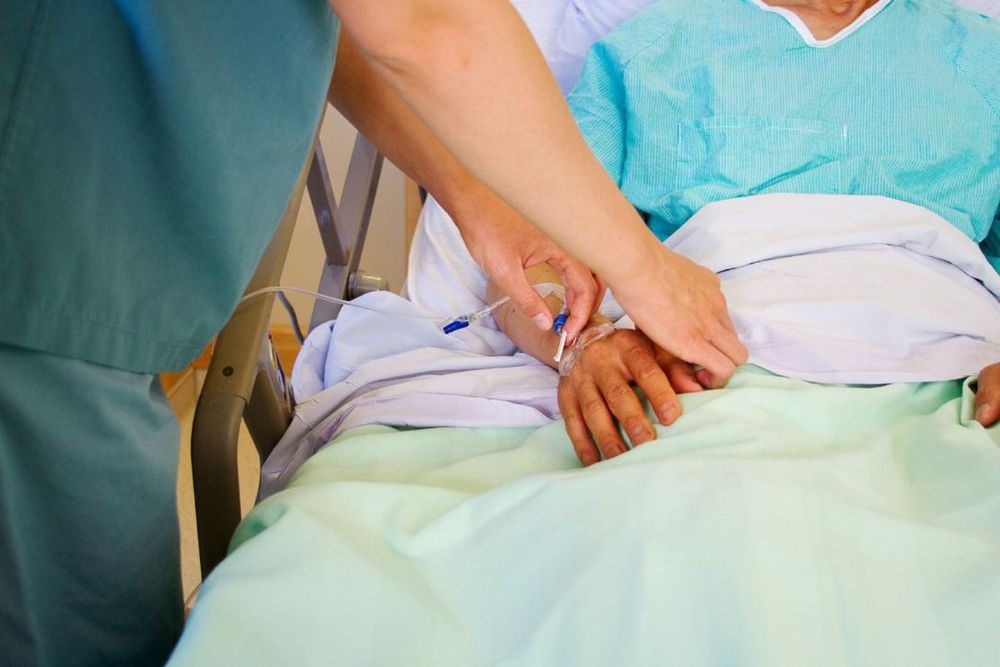
Bệnh nhân phải đạt được hầu hết các tiêu chuẩn mới có thể ngưng dùng máy
3. Ways to wean off a ventilator
There are three basic methods of weaning from the ventilator: T-tube weaning, IMV (SIMV) and PSV (CPAP/PS)T-tube weaning (intermittent weaning) is usually appropriate for cases with Cardiopulmonary status was normal and the duration of mechanical ventilation was short (less than 3 days). This method has advantages such as: assessing the patient's ability to breathe spontaneously, can use mechanical testing of respiratory muscles, early and often assessment of the patient's ability to breathe on their own, Weaning time could be quicker. However, this method also has some disadvantages such as: the technician will take more time for the process, it is difficult for some patients to switch immediately to sudden withdrawal, and cannot compensate for the airway resistance caused by the tube. endotracheal intubation, which can overwork the patient and tire the diaphragm. SIMV. This method does not take the technician's time, and at the same time it is very easy to apply. It ensures minimal minute ventilation. Besides, it also has a modern alarm system. Alternatively, this method can be used in combination with PSV (CPAP/PS). However, using this method also has some disadvantages such as no synchronicity between the machine and the patient, the risk of high breathing work, the possible prolongation of the withdrawal time, the more fatigued the patient and the possible loss of life. make the condition worse.

Nếu máy và bệnh nhân không tương thích sẽ làm tình trạng bệnh xấu đi
4. Follow up
Pulse, blood pressure, ECG (on monitor), SpO2: regular. Blood gas test: periodically (12-24 hours/time) depending on the patient's condition, emergency treatment when there are abnormal developments. Ventilator operation, airway pressures, alarms. Chest X-ray: taken every 1-2 days, emergency scans when there are abnormal developments. To wean off the ventilator, the patient needs to meet the weaning conditions, otherwise, the conditions may be dangerous to the patient's health and life.Mechanical ventilation is a measure to support breathing for patients performed at Vinmec International General Hospital. When performing mechanical ventilation, the patient will be guided by the doctors and nurses, and at the same time perform weaning from the ventilator when the patient has met the withdrawal conditions and can breathe naturally.
With a system of modern facilities, perfect medical services accompanied by and performed by qualified medical doctors, many years of working in the profession will bring the best treatment results for you. customer.
Master. Doctor Tong Van Hoan has 10 years of experience in the field of Emergency Resuscitation, is capable of performing difficult techniques in Emergency Resuscitation such as advanced mechanical ventilation, continuous and intermittent dialysis, plasma exchange. , difficult airway intervention, hemodynamic monitoring by PiCCO, advanced cardiopulmonary resuscitation (ACLS), emergency bedside ultrasound, echocardiography...
To register for examination and treatment at General Hospital Vinmec International Department, you can contact Vinmec Health System nationwide, or register online HERE.





